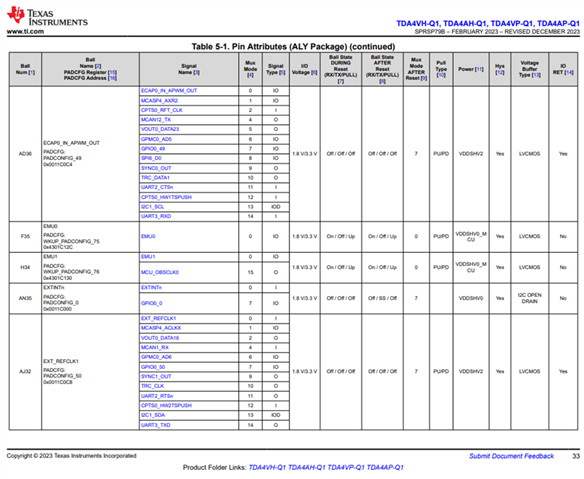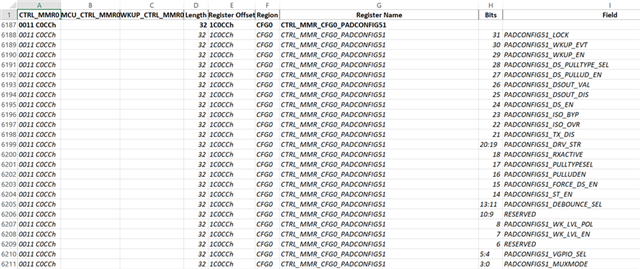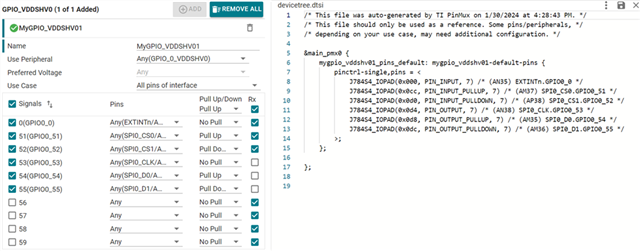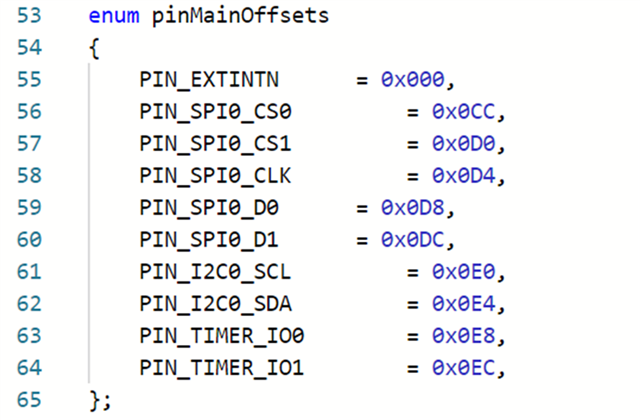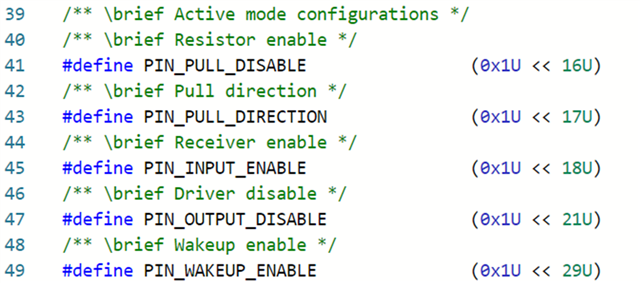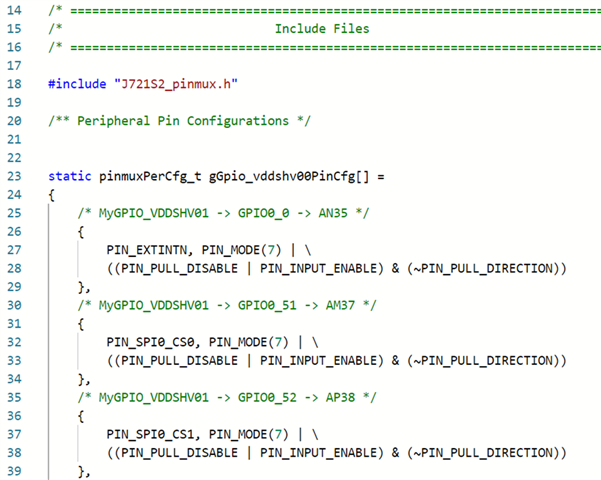TI’s SysConfig PinMux Tool is a GUI interface which allows the user to select the desired device pin configurations for their system. The SysConfig PinMux Tool outputs customer-selected configurations in the following files:
- devicetree.dtsi,
- <device>_pinmux.h, and
- <device>_pinmux_data.c
Where <device> corresponds to the superset name of the device.
Here are some recommendations, using TDA4VH as an example, to validate the output files to a device’s respective datasheet and technical reference manual.


